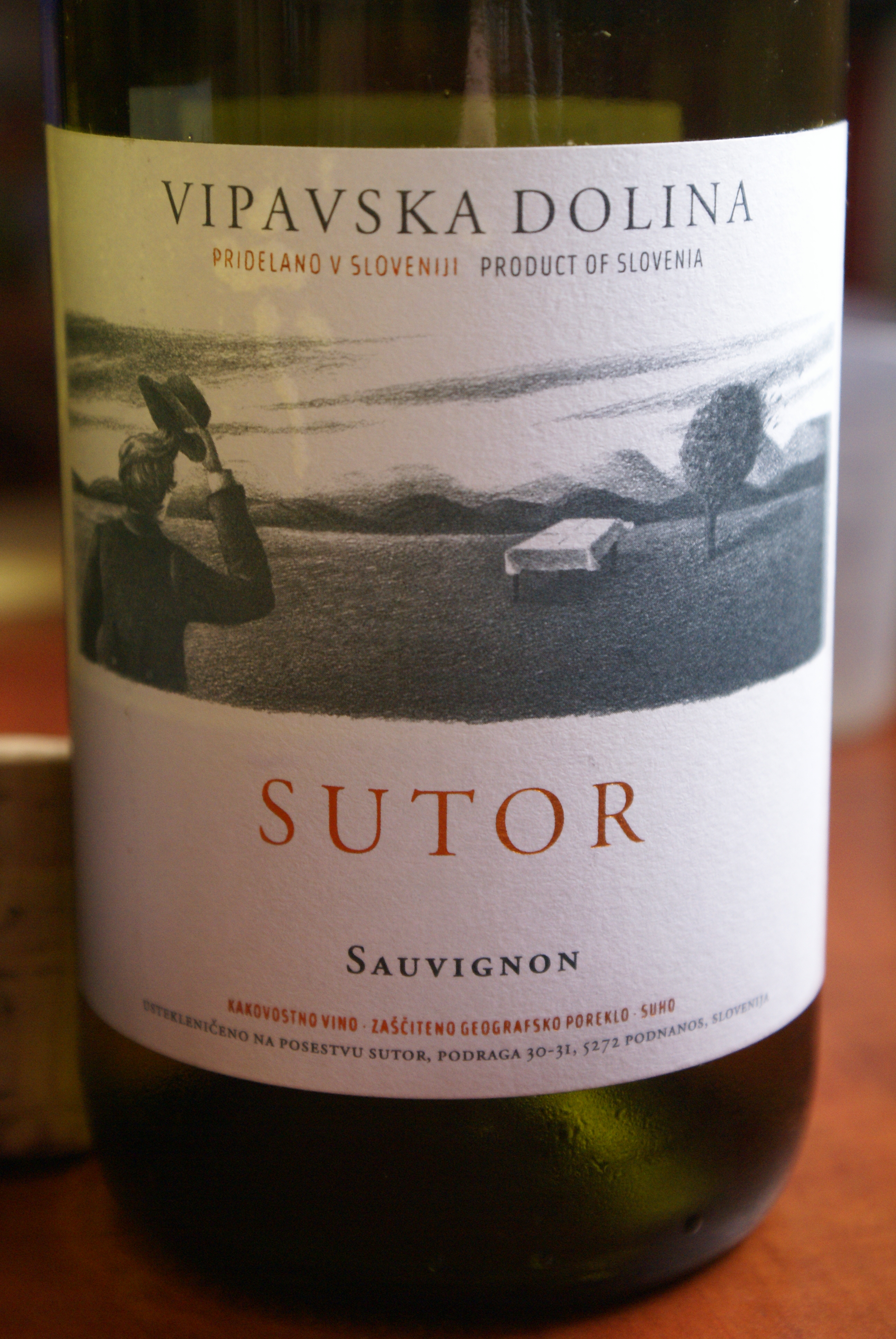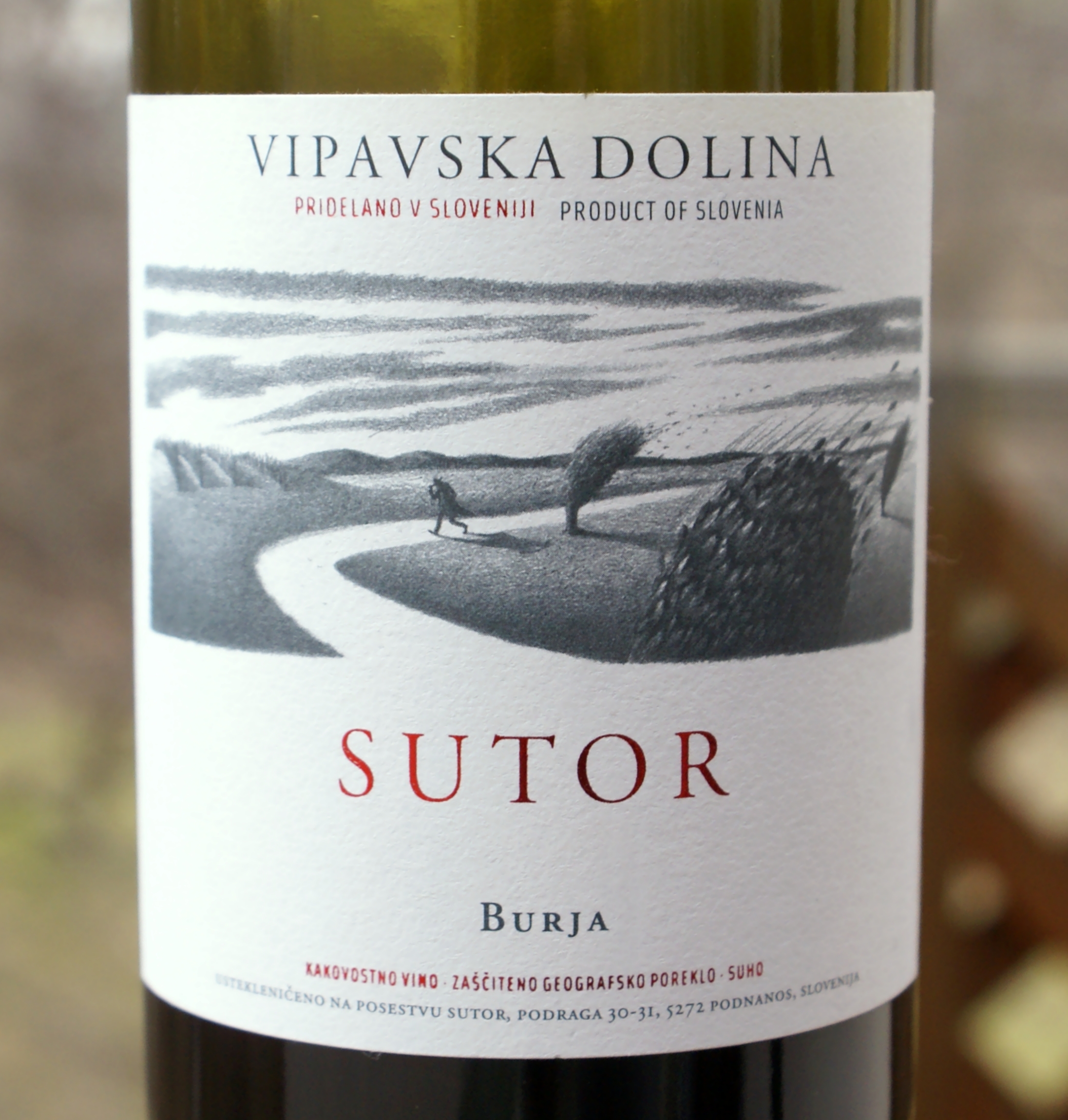Sutor: a Slovenian star
Posted on 18 March 2011
I need to drink more wine from Slovenia. This tiny 2-million country sandwiched between Italy, Austria and Croatia in a happy geographical position is making some of Europe’s most distinctive and delicious wines these days.
The big buzz in Slovenia is in Brda, opposite the by now inexistent border of Italian Collio, and Kras, the same as Italian Carso, a limestone terroir yielding fabulously mineral whites (and some reds). Vipava, an appellation located midway between the former two, gets less attention; certainly it lacks Brda’s concentration of fine estates. But there’s one gem: the Sutor estate of Edvard and Mitja Lavrenčič. For a good decade now it has been the source of Slovenia’s best Sauvignon: a wine with the mineral depth of the great Sancerres but a little more fruit.
It’s been a while since I tasted these wines. Two new releases uncorked this week were simply brilliant. The 2008 Sauvignon is a great interpretation of the grape. It is fresh and limpid but avoids the aggressively green notes of Sauvignon: there’s no nettle, menthol or cat pee, just ripe apples and pears and citrus. The acidity is lovely: refreshing and enlivening but not tart; it’s what is called ‘ripe acidity’ in vinous jargon. At 13% this wine is a fantastic compromise: there’s no greenness or aggressiveness but even less overripeness or honeyed richness of late-picked Sauvignon.
I can say about the same of the 2007 Burja, a blend of 90% Merlot and 10% Refošk. The presence of the latter in a blend in Slovenia can often result in challenging acidity or green tannins, the variety being a notorious late-ripener. But it works well here. This is one of the least emphatic reds I’ve had of late: there’s not a milligram of noticeable oak, and the tannins are superbly natural and unstretched. If you like big ripe fruity reds, this is not really for you: it focuses on juiciness, drinkability, with just a hint of underripeness in the smokey, leafy, vegetal notes. Yet this character is very well-dosed: it adds freshness but not greenness.
I recently blogged on the crucial importance of timing in grape harvesting. My view is that most modern wines are harvested too late: in search of the elusive (and often misinterpreted) ‘physiological ripeness’, of a high-Parker-score-encouraging superfruity style, of higher alcohol that many vintners in Europe and beyond are absurdly considering a sign of quality. Sutor offers a refreshing solution to this dilemma. Here the harvest time is just perfect: it’s conservative enough to preserve much natural freshness in the wines, and human alcohol levels, and yet the wines taste fruity and ample and deep. A confirmation, if any was needed, that picking slightly earlier needn’t compromise the fruit expression.
These Sutor bottlings are not ‘great’ wines (it’s sometimes argued that Sauvignon or Merlot never really make great wines). I can think of more complex and structured examples of either grape. Instead of reaching to elusive intellectual heights, however, Lavrenčič prefers drinkability, a natural balance and a sense of place. It’s ironic that his wines would today seem so conservative and old-style: it shows how much the wine world has gone in the wrong direction of power and density. Sutor reconciles with wine’s original purpose: a refreshing palate-cleansing liquid to be imbibed in generous quantities.
Disclosure
Source of wines: tasting samples from the Polish importer.




